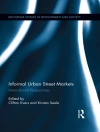Multivariate analysis of the multi-component analytical profiles of carefully collected biofluid and/or tissue biopsy specimens can provide a ‘fingerprint’ of their biomolecular/metabolic status. Therefore, if applied correctly, valuable information regarding disease indicators, disease strata and sub-strata and disease activities can be obtained.
This exemplary new book highlights applications of these techniques in the areas of drug therapy and toxicology, cancer, obesity and diabetes, as well as outlining applications to cardiovascular, infectious, inflammatory and oral diseases in detail. The book gives particular reference to cautionary measures that must be applied to the diagnosis and classification of these conditions or physiological criteria. Comprehensively covering a wide range of topics, of particular interest is the focus on experimental design and ‘rights and wrongs’ of the techniques commonly applied by researchers, and the very recent development of powerful ‘Pattern Recognition’ techniques.
The book provides a detailed introduction to the area, applications and common pitfalls of the techniques discussed before moving into detailed coverage of specific disease areas, each highlighted in individual chapters. This title will provide an invaluable resource to Medicinal chemists, Biochemists and toxicologists working in industry and academia.
Cuprins
Preface;
Introduction to the Applications of Chemometric Techniques in ‘Omics’ Research;
Experimental Design: Sample Collection, Sample Size, Power Calculations, Essential Assumptions, and Univariate Approaches to Metabolomic Analysis;
Recent Developments in Exploratory Data Analysis and Pattern Recognition Techniques;
Analysis of High-dimensional Data from Designed Metabolomics Studies;
Current Trends in Multivariate Biomarker Discovery;
Discovery-based Studies of Mammalian Metabolomes with the Application of Mass Spectrometry Platforms;Recent advances in the multivariate chemometric analysis of cancer metabolic profiling;
Group-specific Internal Standard Technology (GSIST) for Mass Spectrometry-Based Metabolite Profiling;
18O-assisted 31P NMR and mass spectrometry for phosphometabolomic fingerprinting and metabolic monitoring;
Investigations of the Mechanisms of Action of Oral Healthcare Products using 1H NMR-Based Chemometric Techniques;
Metabolomics Investigation of Drug-Induced Hepatotoxicity;
Chemogenomics
Despre autor
After graduating in Chemistry/Statistical Analysis at Birkbeck College, University of London in 1981, Prof. Grootveld completed his Ph.D on bioanalytical chemistry and metallodrugs in 1985 at the same institution and then conducted post-doctoral work on the analysis of ‘markers’ of free radical activity in biofluids at King’s College, University of London. He then spent 2 1/2 years lecturing and conducting research work at the Polytechnic of North London prior to taking up a Lectureship in Clinical Chemistry at St. Bartholomews and the Royal London School of Medicine and Dentistry in 1989, where he subsequently became Senior Lecturer and then Reader in Chemical Pathology. Later, he transferred to London South Bank University where he was also Reader in Chemical Pathology, and Director of their M.Sc Forensic Science course. He is now Professor of Chemical Pathology and Biomedical Materials at the University of Bolton where he has established and now directs a Master’s course in Medical and Healthcare Devices which is the first of its kind available in the UK. He was Visiting Professor of Clinical Chemistry at Queen’s University Belfast from 2001-2005. Prof. Grootveld is the author of almost 100 full, refereed research publications in reputable international scientific and/or clinical journals, 20 reviews and more than 160 refereed conference contributions.












